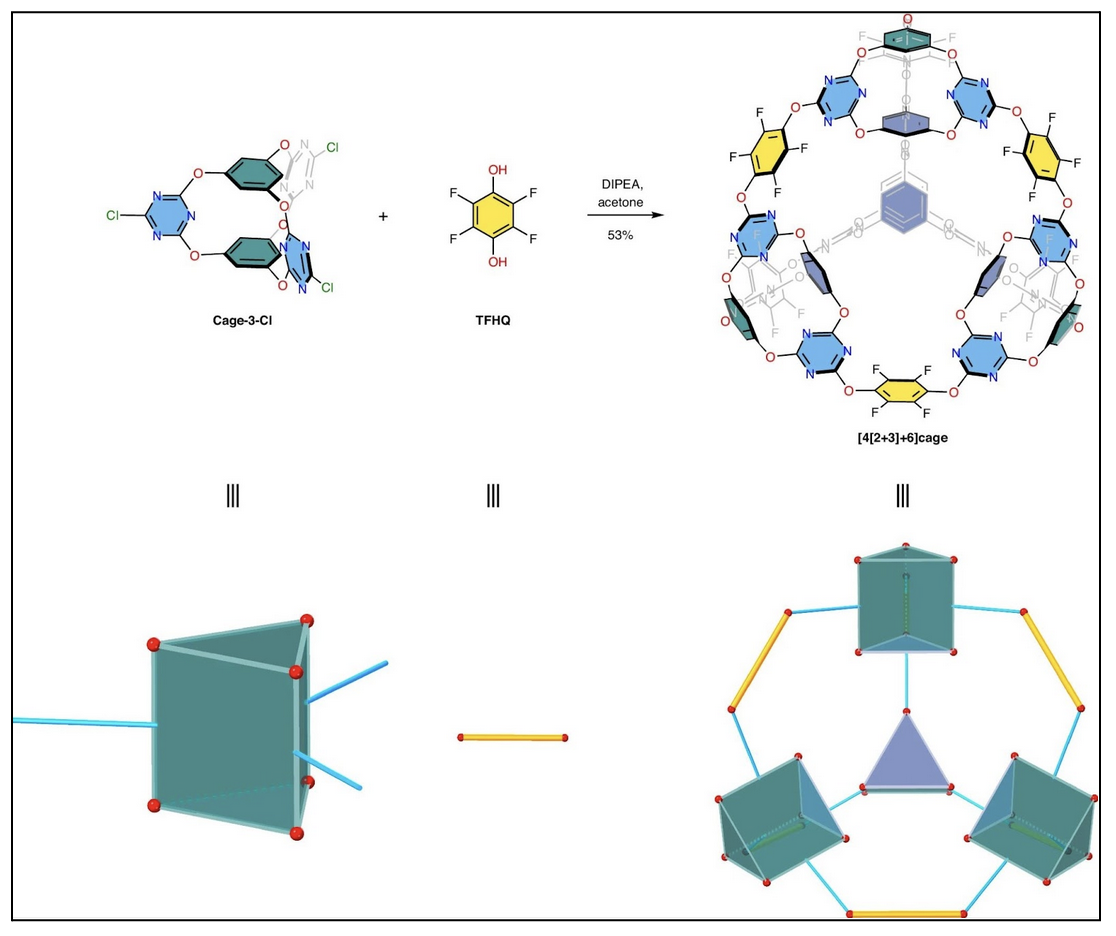News Excerpt:
A new type of porous material that can store carbon dioxide and other greenhouse gases has been developed by a team of scientists from the UK and China.
The "cage of cages":
- The material was created in two phases by scientists in the UK and China using reactions to assemble triangular prism-building pieces into bigger, more symmetrical tetrahedral cages.
- This is the first molecular structure of its type.
- The creation of this intricate material was done using a process known as supramolecular self-assembly.

Characteristics of the new material:
Unique material exhibits high greenhouse gas absorption
- The novel material has demonstrated a remarkable ability to attract and retain greenhouse gases like CO2 due to its high concentration of polar molecules.
- It also shows excellent stability in water, a crucial feature for potential industrial applications in capturing carbon from wet or humid gas streams.
- Apart from CO2 the cage-like material also demonstrated a high absorption rate of sulphur hexafluoride (SF6).
-
- SF6 has been identified by the Intergovernmental Panel on Climate Change as the most potent greenhouse gas.
- CO2 persists in the atmosphere for 5-200 years. However, SF6 can linger for around 800 to 3,200 years, giving it a global warming potential approximately 23,500 times that of CO2, over a 100-year period.
- Despite its lower atmospheric levels, SF6's extremely long lifetime makes it a significant contributor to global warming.
- SF6 has been identified by the Intergovernmental Panel on Climate Change as the most potent greenhouse gas.
- In addition to mitigating greenhouse gas emissions, this innovative material may remove airborne contaminants such as volatile organic compounds.
Potential of the material:
Discovery could enhance carbon removal strategies
- Currently, carbon removal strategies are only eliminating about two billion tons per year out of an estimated requirement of around 20 billion tons to balance our carbon emissions.
- A mere 0.1% of carbon removal is attributed to new technologies such as direct air capture which employs porous materials to absorb CO2 from the air.
- This newly discovered material could potentially enhance direct air capture efficiency, decrease energy consumption, and avert the worst impacts of climate change.
-
- Researchers are working on new materials to make direct air capture more efficient and less energy-intensive, and this new substance might be one of them.
- We need new porous materials to help solve society's biggest challenges, like capturing and storing greenhouse gases.


